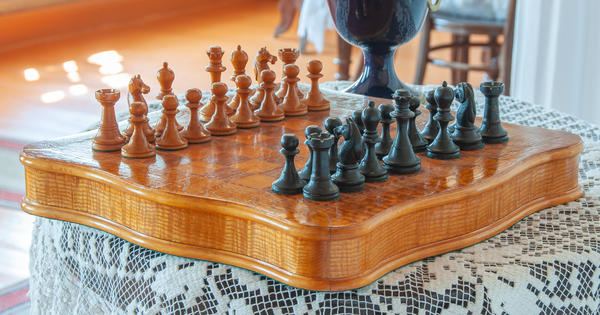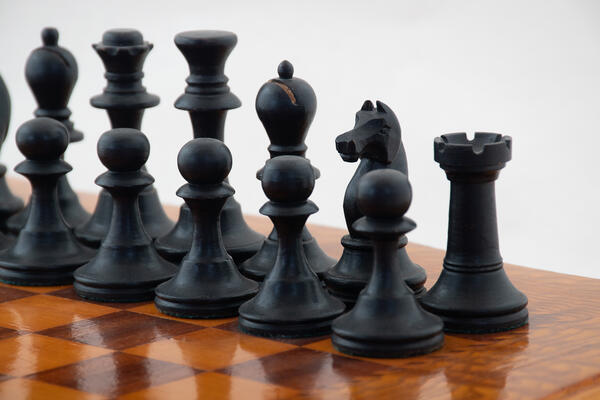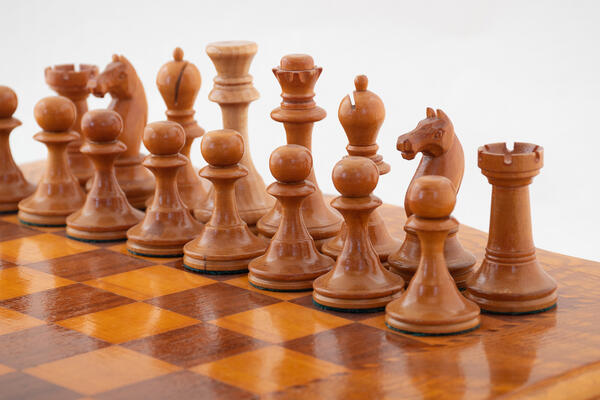The exhibit is an exact copy of a chess set, which Vladimir Ilyich Lenin’s father, Ilya Nikolaevich Ulyanov, made on a lathe.
The chessboard is made of two planes with wavy edges, which are connected by a vertical “rim”. The lower part is covered with green cloth, the upper part is made of different types of wood. There are wide fields along the edge, and in the center there is a chess field on which the pieces are placed. The board is hollow and not collapsible.
Chess was very popular in the family of the future leader of the October Revolution. The interest in the game was instilled in children by their father, Ilya Nikolaevich. For example, according to his brother’s memoirs, Volodya Ulyanov began playing chess from the age of eight or nine.
“The opposite is usually true — people prefer to win, even if without much effort and labor. Vladimir Ilyich had a different approach: his main interest in chess consisted in a stubborn struggle to make the best move, in finding a way out of a difficult, sometimes almost hopeless situation; winning or losing in itself was less interesting to him. He enjoyed the opponent’s good moves, not the weak ones. Sometimes, when you did something stupid in the game and gave him an easy win, he would say, laughing: ‘Well, it wasn’t me who won, but you who lost’,” wrote Vladimir Lenin’s younger brother, Dmitry Ilyich Ulyanov, in his memoirs.
Chess accompanied Vladimir Ulyanov during his exile
in the village of Shushenskoye from 1897 to 1900. Back then Nadezhda Krupskaya,
already in the status of Ulyanov’s wife, when describing their way of life and
available entertainment, wrote to Vladimir’s elder sister Anna Ilyinichna in
Podolsk:





